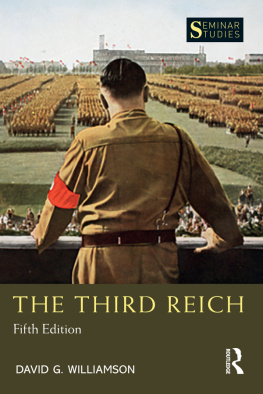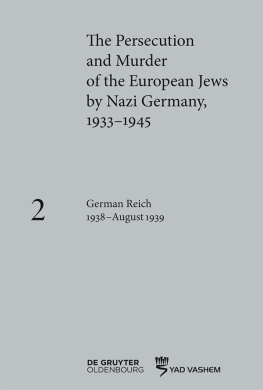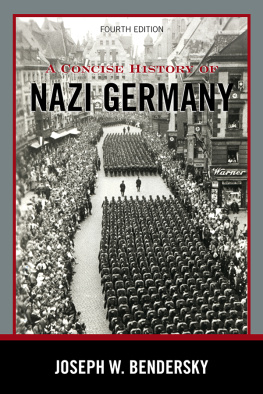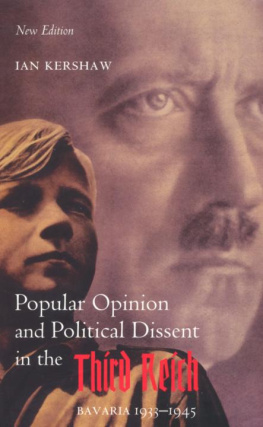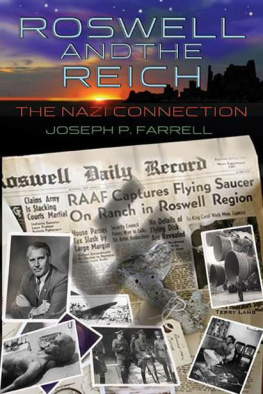The new edition has been expanded to give increased coverage to such topics as: ethnic cleansing in Poland and Russia, the role of the Wehrmacht, the Holocaust, attitudes of ordinary Germans to the Third Reich, the German opposition, Nazi foreign policy and the German economy.
Accompanied by a wide range of primary sources, a timeline, maps and a glossary, The Third Reich remains the best available introduction to this short-lived but enormously impactful period in world history.
Introduction to the series
History is the narrative constructed by historians from traces left by the past. Historical enquiry is often driven by contemporary issues and, in conse -quence, historical narratives are constantly reconsidered, reconstructed and reshaped. The fact that different historians have different perspectives on issues means that there is often controversy and no universally agreed version of past events. Seminar Studies was designed to bridge the gap between current research and debate, and the broad, popular, general surveys that often date rapidly.
The volumes in the series are written by historians who are not only familiar with the latest research and current debates concerning their topic, but who have themselves contributed to our understanding of the subject. The books are intended to provide the reader with a clear introduction to a major topic in history. They provide both a narrative of events and a critical analysis of contemporary interpretations. They include the kinds of tools generally omitted from specialist monographs: a chronology of events, a glossary of terms and brief biographies of whos who. They also include bibliographical essays in order to guide students to the literature on various aspects of the subject. Students and teachers alike will find that the selection of documents will stimulate the discussion and offer insight into the raw materials used by historians in their attempt to understand the past.
Clive Emsley and Gordon Martel
Series Editors
Fifth edition published 2018
by Routledge
2 Park Square, Milton Park, Abingdon, Oxon, OX14 4RN
and by Routledge
711 Third Avenue, New York, NY 10017
Routledge is an imprint of the Taylor & Francis Group, an informa business
2018 David G. Williamson
The right of David G. Williamson to be identified as author of this work has been asserted by him in accordance with sections 77 and 78 of the Copyright, Designs and Patents Act 1988.
All rights reserved. No part of this book may be reprinted or reproduced or utilised in any form or by any electronic, mechanical, or other means, now known or hereafter invented, including photocopying and recording, or in any information storage or retrieval system, without permission in writing from the publishers.
Trademark notice: Product or corporate names may be trademarks or registered trademarks, and are used only for identification and explanation without intent to infringe.
First edition published by Pearson Education Limited 1982
Fourth edition published 2011
British Library Cataloguing-in-Publication Data
A catalogue record for this book is available from the British Library
Library of Congress Cataloging-in-Publication Data
A catalog record for this book has been requested
ISBN: 978-1-138-24356-9 (hbk)
ISBN: 978-1-138-24355-2 (pbk)
ISBN: 978-1-315-12115-4 (ebk)
Typeset in Sabon
by Florence Production Ltd, Stoodleigh, Devon, UK
For A.B.R.W., 19011956, and D.R.L.W., 19121978
Contents
PART I
Introduction
PART II
Analysis
PART III
Assessment
PART IV
Documents
Guide
Maps
The maps are placed on p. xxvii onwards
Plates
The plates fall between pages 118 and 119
We are grateful to the following for permission to reproduce copyright material:
Photographs
We are grateful to the Bridgeman Art Library for permission to reproduce all the photographs that appear in the plate section. These images were supplied by the following collections: Peter Newarks Pictures, Peter Newarks Military Pictures and Buyenlarge Archive.
In some instances we have been unable to trace the owners of copyright material, and we would appreciate any information that would enable us to do so.
| 1918 |
| 11 November | Armistice. |
| 1919 |
| January | German Workers Party (DAP) is founded in Munich. |
| 6 April | Soviet republic is set up in Munich. |
| 28 June | Treaty of Versailles. |
| 1920 |
| 24 February | DAP changes its name to the National Socialist German Workers Party (NSDAP). Its 25 Point Programme is announced. |
| 31 March | Hitler leaves the army. |
| 1921 |
| 29 July | Hitler becomes Chairman of the NSDAP. |
| 1923 |
| 11 January | Occupation of the Ruhr by French troops begins. |
| August | German currency is out of control: hyper-inflation. |
| 89 November | The abortive Munich Putsch . |
| 23 November | The Communist Party (KPD) and the NSDAP are banned. |
| 1924 |
| 1 April | Hitler is given a five-year prison sentence. |
| 9 April | Dawes Plan is announced. |
| 20 December | Hitler is released from Landsberg Prison. |
| 1925 |
| 27 February | Nazi Party is re-founded. |
| 25 April | Hindenburg is elected President. |
| 1926 |
| 14 February | Bamberg Conference: Hitler re-establishes control over the NSDAP. |
| 1928 |
| 28 June | Grand Coalition is formed: NSDAP wins only 12 seats. |
| 1929 |
| 9 July | Nazis and Nationalists (DNVP) jointly oppose the Young Plan. |
| 2429 October | US stock market crashes. |
| 1930 |
| 30 March | Brning becomes Reich Chancellor. |
| 14 September | Reichstag elections: NSDAP gains 107 seats. |
| 1931 |
| February | Unemployment totals 5 million. |
| 11 October | The Harzburg Front is formed. |
| 1932 |
| MarchApril | Presidential elections: Hindenburg is re-elected. |

